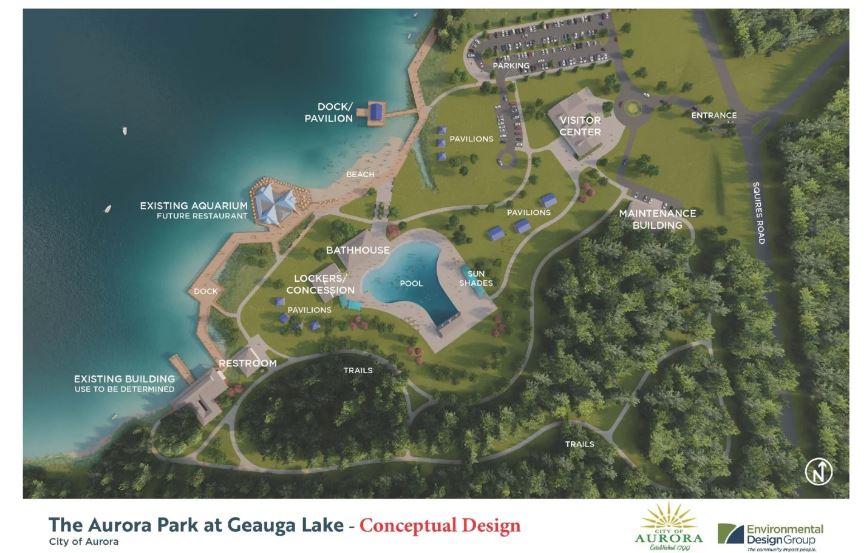When considering what a LEGOLAND takeover of Geauga Lake might have looked like, it’s worth looking at the example of LEGOLAND Florida, which took over Cypress Gardens in 2010. Cypress Gardens, once a historic botanical garden and water-ski attraction, struggled to stay relevant in the competitive Florida theme park market. When LEGOLAND acquired the property, they preserved many of the original gardens and even some classic attractions like the water-ski shows, while introducing their signature family-friendly rides and LEGO-themed areas. This blend of old and new allowed them to respect the history of Cypress Gardens while creating a unique offering for families with young children.

LEGOLAND Geauga Lake
In 1999, no one knew the success the LEGOLAND brand and theme parks would one day have. But for a minute, let’s pretend the LEGOLAND creators could go back in time, retaining what they know now. If LEGOLAND had purchased Geauga Lake (and SeaWorld Ohio) instead of Six Flags, the park would have taken a very different direction, focusing on a family-friendly, LEGO-themed experience rather than the thrill-ride approach Six Flags took. Here’s how things might have turned out:

Geauga Lake map 1999, https://www.rollercoasterfreak.com/Geauga_Lake/Brochures/1999_pg_map.jpg
Rides and Attractions
Let’s start with the coasters. Between 2000 and 2001, Six Flags added five roller coasters to Geauga Lake. In this alternate reality, that’s not happening. In fact, even though they were just added in 1996 and 1998, the Mind Eraser Vekoma boomerang and Serial Thriller Vekoma suspended looping coaster (SLC) would be sold off, as their thrill level would not match the new direction for the park. The Big Dipper and Raging Wolf Bobs wood coasters would be kept along with the Double Loop (at least until it reached the end of its service life). High-thrill rides such as Time Warp, Texas Twister, and Mr. Hyde’s Nasty Fall could have been sold too to help offset the cost of new rides.
LEGOLAND parks are known for their emphasis on attractions aimed at younger children and families, rather than intense thrill rides. Instead of adding extreme roller coasters like Six Flags did, LEGOLAND would have focused on building themed areas and attractions that cater to kids aged 2-12, with interactive play areas, gentle rides, and family attractions.
From the SeaWorld Ohio side, the Bermuda Triangle motion simulator, 4D theater, and Happy Harbor climbing structure would all be reused with a new LEGO City: Deep Sea Adventure theme. Eventually the submarine ride from LEGOLAND California would be added here as well.

SeaWorld Ohio map 1999, https://imgur.com/a/7mMFrle
Brickbeard’s Watersport Stunt Show at LEGOLAND Florida would work perfectly using the existing 3,500 seat lakefront stadium.
LEGOLAND Geauga Lake’s Themed Areas
A LEGOLAND version of Geauga Lake could have featured themed lands seen in all the other LEGOLANDs. The entrance area and Ferris wheel would be part of Bricktopia. The area around the monorail would be LEGO City and the go kart tracks turned into the Driving School attraction. The existing waterpark could have been rebranded as Pirate Shores. The Raging Wolf Bobs and Grizzly Run rapids ride would be incorporated into a LEGO Castle or Kingdoms area. Double Loop would be part of NINJAGO.

LEGO Ohio Stadium
A major draw could have been a Miniland USA, showcasing Ohio landmarks, including Ohio Stadium and even Cedar Point recreated in miniature with thousands of LEGO bricks. This would be located on the SeaWorld side of the lake in place of the removed animal habitats.
Events
LEGOLAND parks often integrate STEM (Science, Technology, Engineering, and Math) learning through LEGO-building workshops and interactive exhibits. This would have aligned Geauga Lake more closely with educational field trips and local school programs, offering activities like robotics challenges and building competitions.
It could have also offered more job opportunities for the local community through a longer operating season, as LEGOLAND parks sometimes extend into the shoulder months for special events like Brick-or-Treat at Halloween or Christmas Bricktacular during the holidays.




















Recent Discussion